Introduction
Renewable energy has gained massive popularity over the recent past because of the growing need for alternative and clean energy. The use of fossil fuel is becoming unsustainable because of its impact on the environment and the dwindling reserves. Wind energy has become one of the most reliable alternative energy sources around the world. The technology converts kinetic energy from the wind into electrical energy that can be used at home or in the industrial sector. It uses wing turbines for the conversion. According to Shahmari (2017), wind turbine, often referred to as the wind energy converter, uses the aerodynamic force from its rotor blades to convert the kinetic energy into electrical energy.
Using the same concept as helicopter rotor blades or an airplane wings, the blades creates imbalance in pressure to facilitate rotation. As wind flows across these blades, there is a significant decrease in air pressure on one of the two sides of the blade. The imbalanced air pressure creates a drag and a lift, and given the fact that the life force is stronger than that of the drag, it causes the rotor to spin (Battisti, 2019). The rotor is connected to a generator using a series of gears or directly through a drive tube. As the rotor rotates, the generator is responsible for the conversion of the aerodynamic force into electricity. Figure 1 below identifies various components of a wind turbine, from the rotor, to the generator, to cables used to transmit the electricity to the grid.
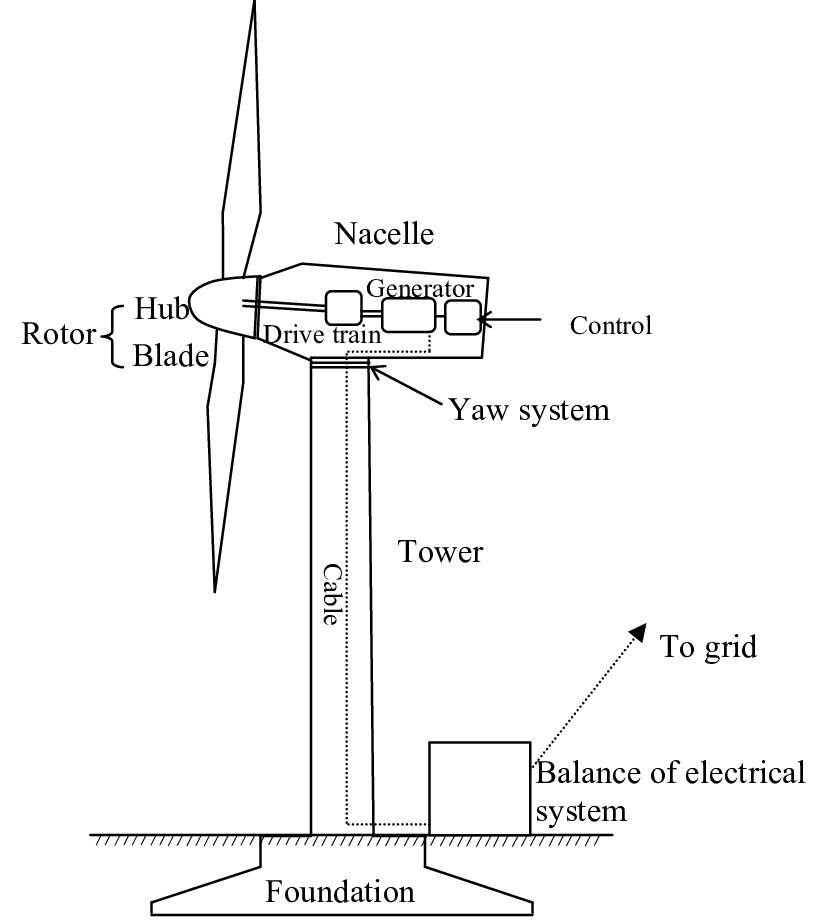
The turbine may take different forms, with the horizontal axis wind turbines (HAWTs) being the most common one. This technology uses aerodynamic blades that are fitted to a rotor in either a downward or upward position. In most of the cases, they use two or three blades operating at high tip speeds (Rao, 2018). It is a popular technology because of its high aerodynamic yields when compared to the vertical one. It starts autonomously, which is another benefit that has made it popular. However, Saad and Asmuin (2014) believe that the downward rotors are known to have diminished wind energy production at low speed because of the long time it takes when it tries to line up with the wind.
This behavior is often referred to as a walk around because the turbines will be rotating without producing the needed energy. Horizontal axis wind turbine popularly uses between 2 to 4 blades. The higher the number of blades (3 or 4) the stronger the system is in terms of generation of power. Figure 2 below shows a horizontal axis wind turbine with four blades. It is important to note that the three-bladed wind turbine is the most common one and also very effective in the generation of electrical energy from the wind.
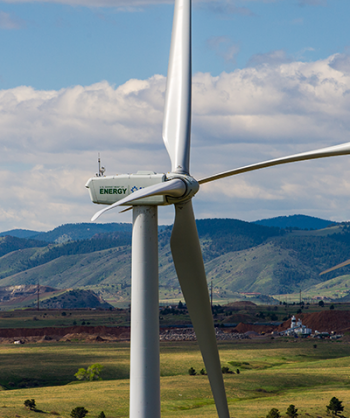
Vertical Axis Wind Turbine
The advancement in technology has made it possible for improvement to be made in the production of wind energy. Because of the weaknesses identified with the traditional horizontal axis wind turbines, there has been a need to find a way of improving that technology. A vertical axis wind turbine, also known as the cross-flow wind turbine or the traverse axis wind turbine, has emerged (Falco and Mastrandrea, 2014). Unlike the technology used in the horizontal axis turbines, this one uses a different orientation in the alignment of the blades. The gearbox and the generator are located at the base while the blades that rotate take the vertical orientation (Tjiu et al., 2015). One of the main benefits of this orientation is that it does not need to be pointed to the direction of the air for the blades to start rotating fast enough to produce energy. It means that it does not need the mechanism for orientation and sensing of the wind because of the Omni-directional orientation.
Whichever direction that the wind moves, the blades will adjust automatically, making it a simpler tool for generation of energy. Maintenance of this power generator is also simpler than the horizontal one. As explained above, the gearbox and the generator for this vertical axis wind turbine are located on the ground, unlike that of horizontal axis located at the apex of the shaft alongside the blades. It is easy to inspect and maintain this important system because of its location. It is important to note that despite these benefits, the technology has some draw backs which are worth noting. It is important to acknowledge the fact that this design also has some weaknesses that make it less popular in some settings.
One of the main weaknesses of this design is that it has a major torque variation during the revolution which affects the smooth production of the needed energy. Large bending of the blades was identified as another major challenge when using the vertical axis wind turbines. The blades sometimes experience dynamic stall when there is a sudden variation of the angle of attack. The design makes the blades fatigue-prone, which has been blamed for the stall and regular bending of the blades when there is a strong gush of wind. The original designs were also noted to be less reliable than the horizontal axis wing turbines in wind generation. Newer models of VAWT have tried to address these weaknesses as the design continue to gain popularity in urban settings. Figure 3 below shows the orientation of a vertical axis wind turbine.
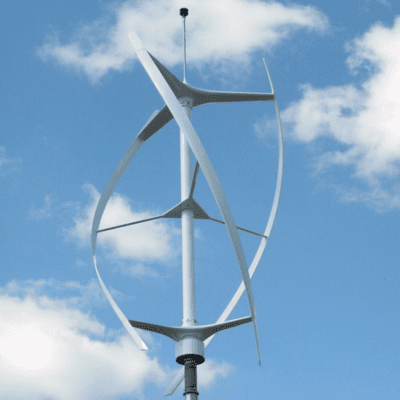
Darrieus Wind Turbine
Darrieus wind turbine is one of the earliest designs of vertical axis wind turbines to be developed. George Jean Marie Darrieus patented the design in 1926 as an alternative to the horizontal axis wind turbine which had a complex mechanism that was not easy to maintain. In this design, aerofoils are in a symmetrical arrangement with a zero rigging angle, which means that they are set relative to the structure they are mounted on, as Rao (2018) explains. The design was developed out of the desire to ensure that the blades will move effectively irrespective of the direction in which the wind is blowing. It senses the slightest movement of wind and responds immediately. During the spin of the rotor, aerofoils will move forward in a circular path through the air (Saad and Asmuin, 2014). The torque and speed energy is extracted, through the blades and then converted into electrical energy using the generator at the base of the turbine. When introduced, it was considered a major breakthrough in wind production because it promised to address most of the weaknesses of the traditional horizontal axis wind turbine.
Darrieus wind turbine had a number of weaknesses that made it necessary for various improvements to be made for later designs. According to Battisti (2019), changes in the angle of attack when the turbine is spinning creates an imbalanced torque. The result is a pulsing or sinusoidal cycle of power that complicates the power production process. The pulsing problem is also responsible for the mechanical wear and tear of the blades, which explains why they are prone to bending or even breaking down completely if they are not properly maintained (Sayigh, 2018). In most of the cases, the system has to be fitted with mechanical breaks (or any other device that can control its speed) that can ensure that the turbine do not spin at such high and irregular speeds for a long time.
Another challenge is that the system is often characterized with high centrifugal stress because a significant mass of the mechanism that is rotating is not at the hub but the periphery. This problem further weakens the system, making it easy for it to break down easily when it is in operation. Although it was a major advancement from the previous designs of wind energy turbines, these weaknesses made it expensive to maintain. It required constant inspection, monitoring, and maintenance to ensure that it remained in optimal operation. Figure 4 below shows the design of Darrieus wind turbine.

H-Rotor Darrieus Turbine
When George Jean Marie Darrieus was patenting his design, he developed different variations of the horizontal axis wind turbines. One of them was the Giromill, popularly known as the H-bar design or the H-rotor. It design was a major shift from the other common mechanisms that Darrieus had used previously. The long blades shaped like egg beater, which was common in his traditional designs, were eliminated and straight vertical blades that were attached to its central tower through a horizontal support was introduced (Tjiu et al., 2015). It was a deliberate effort to reduce the imbalance of the speed of the rotation of the blades, which was common in the traditional design. It was believed that this new design would make the system more efficient and less prone to the bending of the blades as was common in the previous designs. Figure 5 below shows the arrangement of the blades and the rotating mechanism. As shown in the figure, it can use two or three rotating blades. The one with the three blades is more effective in the production of energy although it is more expensive to develop.
The H-rotor concept, like many other vertical axis wind turbines that are accredited to Darrieus, is Omni-directional. As such, it does not require yaw mechanism that often helps in orientation of the turbine rotor towards the wind (Kumar et al. 2019). Given the fact that its blades are straight, it produces a consistent speed along its blades, which means that it requires a simple profile of the blade. It is important to note that the consistent speed of air along the blades creates a uniform pressure on the system, which limits bending and constant breakage of the blades. Like the previous models, its electric generator is located on the ground, which means that a light power structure is required to mount the blades (Shahmari, 2017). Another major benefit of this design is that it does not require the gearbox because its shaft directly connects with the generator.
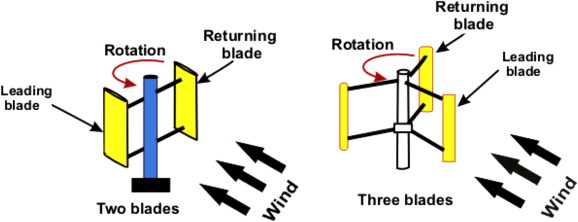
Solar Innovations
Solar innovations have revolutionized the energy sector at a time when there is a concerted effort to find alternative to fossil fuel. In many parts of the world, hydro-electric power has been the primary alternative, but the changing climatic conditions is threatening its sustainability. In some parts of the world which lack regular rainfall, production of hydro-electric power is becoming increasingly difficult (Sivaram, 2018). Solar energy has provided an effective solution to this problem. Some countries in the Middle East and Africa enjoy regular sunlight throughout the year. As such, they are in the best position to tap this energy and use it both for domestic and industrial purposes. Solar energy has been used by humankind prior to the emergence of other forms of energy. It was primarily used to dry food, a practice that is still common in modern society both in the developed and developing worlds.
Different innovations in the solar energy sector has emerged to help in the generation of clean energy. One such revolutionary innovation is solar windows, such as the one shown in figure 6 below. These windows are clear at night or when there is no sunlight (Sivaram, 2018). However, they transform into tinted windows as soon as they are exposed to sunlight, and then start generating power. The concept is gaining massive popularity both for domestic and industrial users as it addresses the problem of limited space for installing the solar panels. It has created a new design in the built industry where large windows are becoming popular because they also act as power sources.
Another revolutionary innovation in the solar energy sector is the new storage mechanism that uses gold. In this technology, solar energy that is produced through solar panels is converted to methanol and methane, which can then be transformed into electrical energy when needed (Sivaram, 2018). It is meant to make the energy portable and usable in settings where it is difficult to generate solar power. The primary challenge of this innovation is the high cost of gold that has limited their ability to scale up production. It is necessary to find cheaper alternatives to gold to ensure that this product can be produced on a commercial scale and made available to those who may need it in different parts of the world.
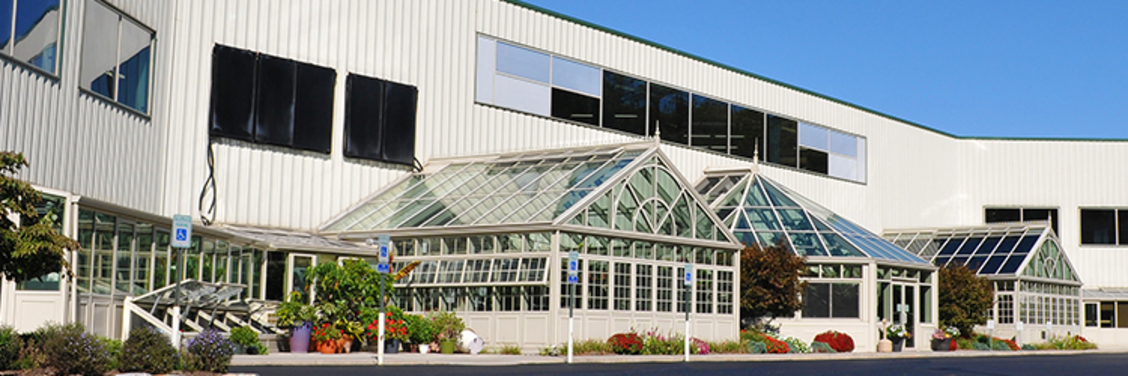
Optimal Angle for Solar Panels
The performance of the solar energy system is influenced by numerous factors, some of which are environmental while others are structural. One of the main factors that define the efficiency of the system is the angle at which it is mounted. As Ahmad (2018) explains, when mounting the solar panel on a rooftop or any other surface, the goal is to ensure that it is exposed to the sun as long as possible, especially when it is strongest. New technologies have emerged that allows the angle of the panel to be adjusted depending on the direction of the sun. The technology is meant to ensure that the panel is facing the sun at all times of the day. However, such technologies have not spread widely around the world, which means that most of those producing this power both on domestic and industrial scale still rely on fixed installation of the panels.
The angle of elevation of the panel should allow it to collect solar energy for as long a period within the day as possible. In an ideal situation, a solar energy system that is mounted on a roof should be at an equal angle to the latitude of the place of installation (Kumar et al., 2019). This is shown in figure 7 below and it is meant to facilitate optimal performance of the system. However, there are cases when it becomes necessary to tilt the angle depending on the design of the roof and other considerations that the installer may have in mind. Ahmad (2018) recommends that a pitch angle that ranges from 30 to 45 degrees may be ideal.
The angle of tilt should be based on the sun’s altitude. It is important to note that the tilt is not a universal requirement in all parts of the world and in all seasons. For instance, during winter when sun shines for a short period and at specific times, the tilting should be made to ensure that it effectively captures the sun during such times. Similarly, different locations around the world may require different angles depending on the time, duration, and strength of the sunlight. In the Middle East and parts of Africa that experience regular sunlight throughout the day, a small angle of tilt will be necessary. The primary objective that one has to consider is the need to ensure that the panels are offered optimal time to capture sunlight.
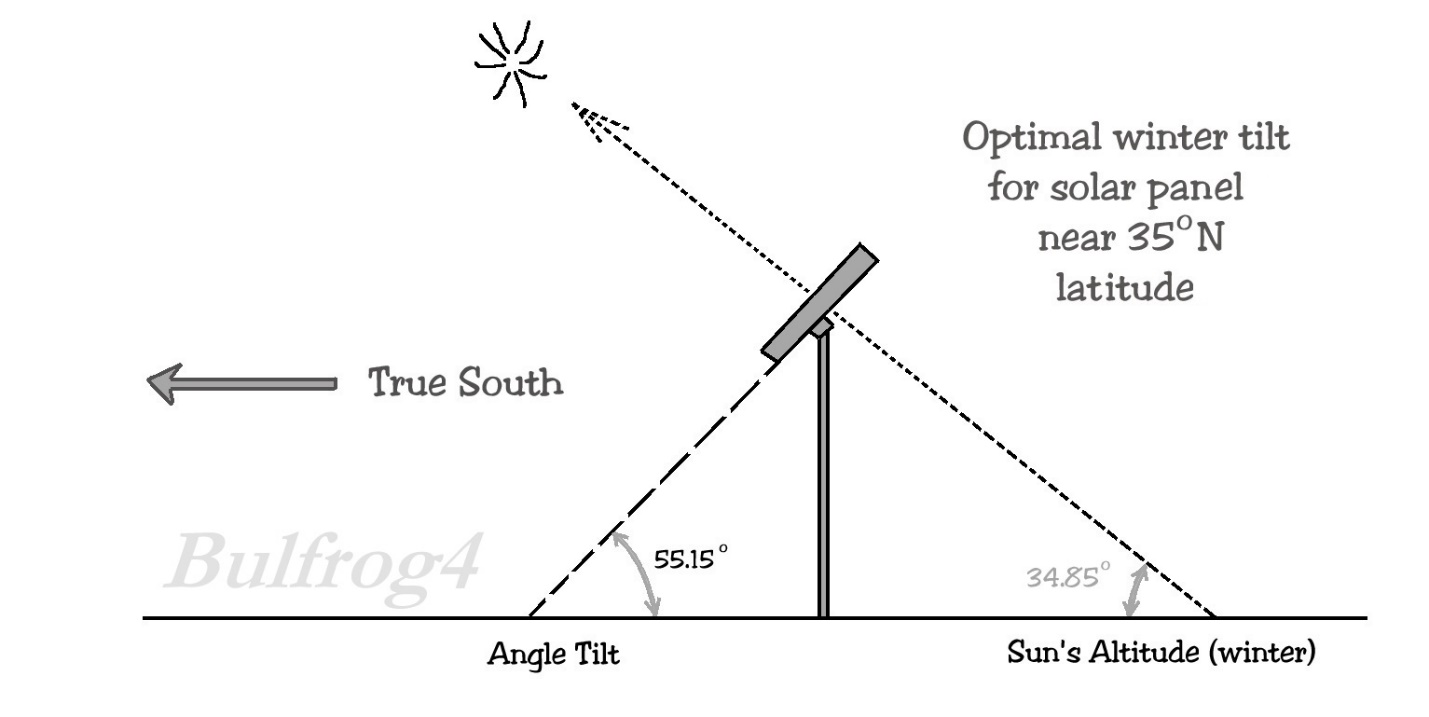
Combination of Renewable Energy
Climate change has become one of the major concerns of the international community over the past three decades. It has become increasingly clear that human activities, especially the excessive use of fossil fuels and deforestation, are the primary causes of climate change and global warming. As such, there has been a need to find alternative energy sources that will facilitate continued global development without compromising environmental sustainability (Sivaram, 2018). The growing global population, increased urbanization, industrial development, and other technological advancements have increased the consumption of energy. Instead of continuing to rely on the petroleum products known to pollute the air, there has been a trend where alternative energy sources are becoming popular both in the industrial and domestic sector.
Having a combination of renewable energy sources is becoming critical in the global effort to reduce the use of fossil fuel. Solar energy is currently one of the most popular forms of renewable energy. Technology in this field has advanced significantly over the years. The ease of installation and maintenance, the low cost of purchasing the equipment, its reliability, and relevance in almost every part of the world has made it a powerful alternative to other energy sources (Sivaram, 2018). Wind energy is also gaining massive popularity as emerging technologies continue to make it more reliable in different environmental settings. Hydroelectric power is still one of the best alternatives to oil and gas both for industrial and domestic use. It is particularly effective in regions with regular rainfall and large rivers. Geothermal and biomass are the other promising sources of renewable energy that is proving reliable in various parts of the world.
References
Ahmad, M. (2018) Operation and control of renewable energy systems. Hoboken, NJ: John Wiley & Sons.
Battisti, L. (eds.) (2019) Wind energy exploitation in urban environment: turb-wind 2018 colloquium. Cham: Springer.
Falco, M. and Mastrandrea, N. (2014) ‘An analytical model for optimizing the combination of energy sources in a single power transmission network’, Journal of Renewable Energy, 14(1), pp. 1-10.
Kumar, P. et al. (2019) ‘Review on the evolution of darrieus vertical axis wind turbine: large wind turbines’, Clean Technol, 1(2), pp. 205-223.
Rao, K. (2018) Wind energy for power generation: meeting the challenge of practical implementation. London: Springer International.
Saad, M. and Asmuin, N. (2014) ‘Comparison of horizontal axis wind turbines and vertical axis wind turbines’ Journal of Engineering, 4(8), pp. 27-30.
Sayigh, A. (2018) Transition towards 100% renewable energy: selected papers from the world renewable energy congress WREC 2017. Cham: Springer.
Shahmari, M. (2017) ‘Design and analysis of a h-rotor darrieus turbine for water pumping operation’, Research Gate, 3(1), pp. 1-7.
Sivaram, V. (2018) Taming the sun: Innovations to harness solar energy and power the planet. Cambridge: The MIT Press.
Tjiu, W. et al. (2015) ‘Darrieus vertical axis wind turbine for power generation I: assessment of darrieus VAWT configurations’, Renewable Energy, 75(2), pp. 50-67.